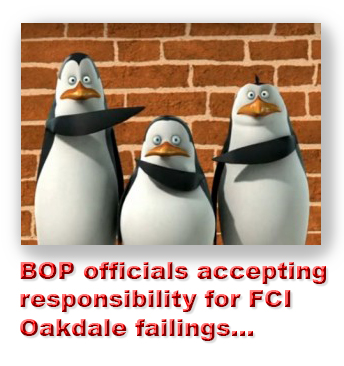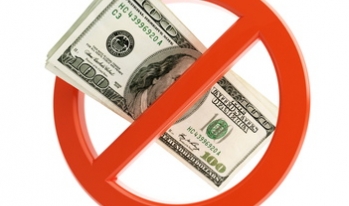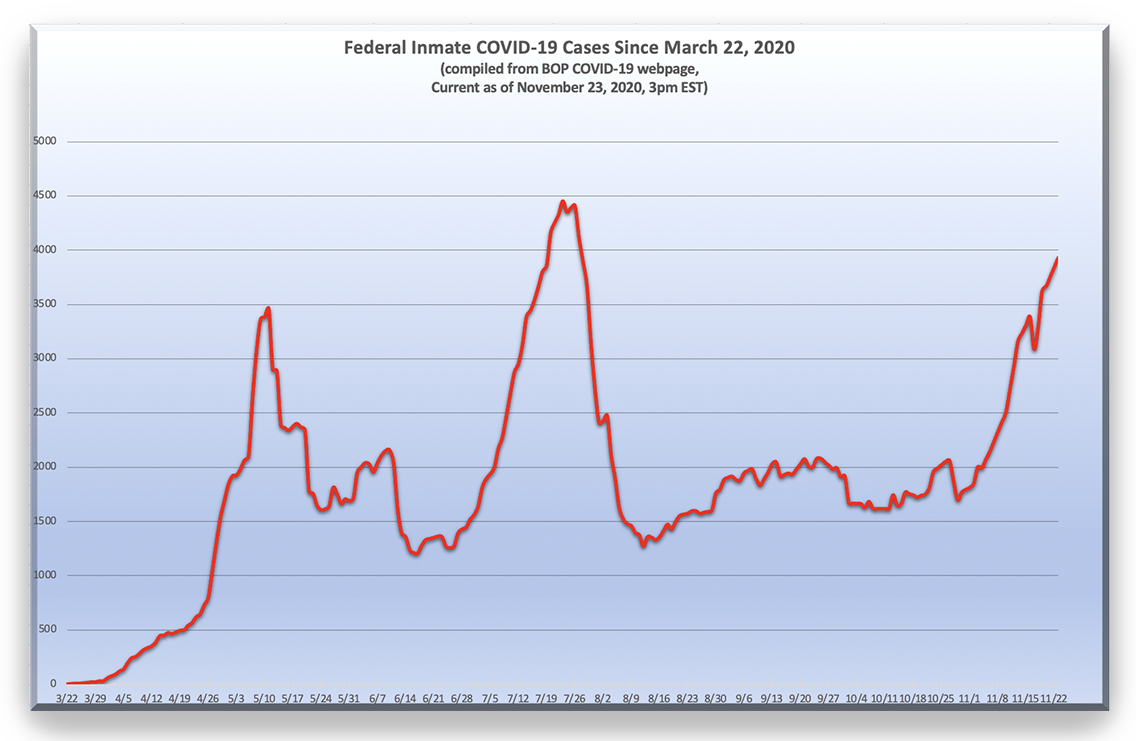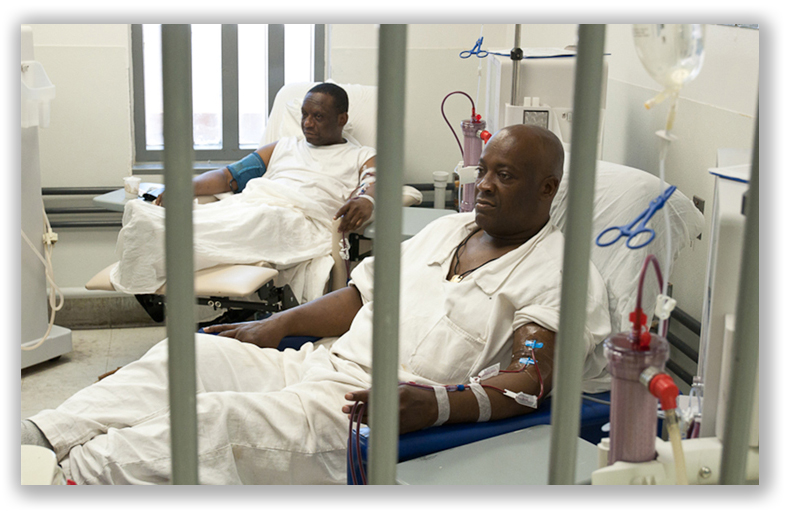We post news and comment on federal criminal justice issues, focused primarily on trial and post-conviction matters, legislative initiatives, and sentencing issues.

INMATES CATCHING COVID, BOP CATCHING HEAT
Last week, we said the Bureau of Prisons was feeling the third wave of coronavirus. The numbers bear us out.
Inmate cases, which have averaged 2,065 active cases a day since Sept 1, hit 3,933 last night. That’s the highest number since the end of July, an increase of 117% since Nov 1 and 16% over a week ago. At the same time, BOP staff cases hit an all-time high of 1,264, up 17% in a week. The virus is again present in all 122 BOP facilities. The BOP has tested 53% of its inmate population, with 28% returning as positive.
The Dept. of Justice Inspector General reported a week ago that BOP officials made a number of mistakes that hobbled the agency’s ability to control the spread of COVID-19 at FCI Oakdale, Louisiana. The DOJ’s internal watchdog found Oakdale officials “failed to promptly” implement COVID-19 screening protocols, took too long to limit inmate movement and failed to properly quarantine and isolate inmates, among other issues. Specifically, Oakdale lacked adequate personal protective equipment and left inmates with the virus in their housing units for a week without being isolated.
Oakdale was the initial BOP prison to experience a serious COVID-19 outbreak, and chalked up the first of what is now over 150 federal inmate deaths.
 Predictably, the BOP criticized the report, arguing its officials and staff complied with guidance to screen staff and inmates for COVID, took proper steps to limit inmate movement during the pandemic, and provided proper protective gear and guidance to employees on how to take precautions to protect against the spread of the disease.
Predictably, the BOP criticized the report, arguing its officials and staff complied with guidance to screen staff and inmates for COVID, took proper steps to limit inmate movement during the pandemic, and provided proper protective gear and guidance to employees on how to take precautions to protect against the spread of the disease.
Drug manufacturer Pfizer has applied for emergency use authorization for its COVID-19 vaccine from the Food and Drug Administration, to be followed by competing vaccine maker Moderna on December 4, and AstraZenica/Oxford about a month later. An emergency use authorization is a fast-track vaccine authorization that can be processed much more quickly than normal approval. The FDA is expected to take one to three weeks to go through the application and make a decision on issuing the emergency authorization. USA Today reports that vaccine could be approved by the week of December 14.
By the end of December, the government expects to have about 40 million vaccine doses available for distribution. The Pfizer and Moderna vaccines both require two doses given between 21 days apart. The BOP has reportedly told the inmate population that it is working to obtain vaccine for its staff and inmates. However, correctional facilities are currently reported to be included in “phase two” of the vaccine rollout, despite the fact healthcare professionals and prisoner advocates argue that they should be given a higher priority.
“We’re hearing promising news that we are one of the targeted areas to get the first dosage—at least our staff is in the first group, and then our patients with higher risk factors would be next,” said Thomas Weber, CEO of a private company providing medical services to state prisons and detention centers. “However, we have a concern about the availability of enough vaccines and how they’re going to distribute them.”
 Finally, 15 members of Congress, all Democrats, wrote to DOJ and the BOP last Tuesday to ask about the changing policies for medical copayments in federal prisons during the pandemic where there have been widespread coronavirus outbreaks. “On March 30, the BOP issued a memorandum waiving the requirement that incarcerated individuals pay ‘copay fee[s] for inmate requested visits to health care providers.’ That waiver expired on October 1, and it is unclear whether that waiver has been extended, given the continued spread of COVID-19 throughout the nation and in federal prisons,” they wrote. “It is also unclear whether the BOP has considered making its copay waiver permanent.”
Finally, 15 members of Congress, all Democrats, wrote to DOJ and the BOP last Tuesday to ask about the changing policies for medical copayments in federal prisons during the pandemic where there have been widespread coronavirus outbreaks. “On March 30, the BOP issued a memorandum waiving the requirement that incarcerated individuals pay ‘copay fee[s] for inmate requested visits to health care providers.’ That waiver expired on October 1, and it is unclear whether that waiver has been extended, given the continued spread of COVID-19 throughout the nation and in federal prisons,” they wrote. “It is also unclear whether the BOP has considered making its copay waiver permanent.”
Office of Inspector General, Remote Inspection of Federal Correctional Complexes Oakdale and Pollock (November 17, 2020)
Reuters, U.S. Justice Dept watchdog: Louisiana prison officials botched COVID-19 pandemic (November 17, 2020)
Atlanta Journal-Constitution, Federal prison in Louisiana left inmates with virus in housing for week (November 18, 2020)
USA Today, When could the first COVID-19 vaccines be given in the US? (November 18, 2020)
Letter to Attorney General William Barr and BOP Director Michael Carvajal (November 16, 2020)
– Thomas L. Root








